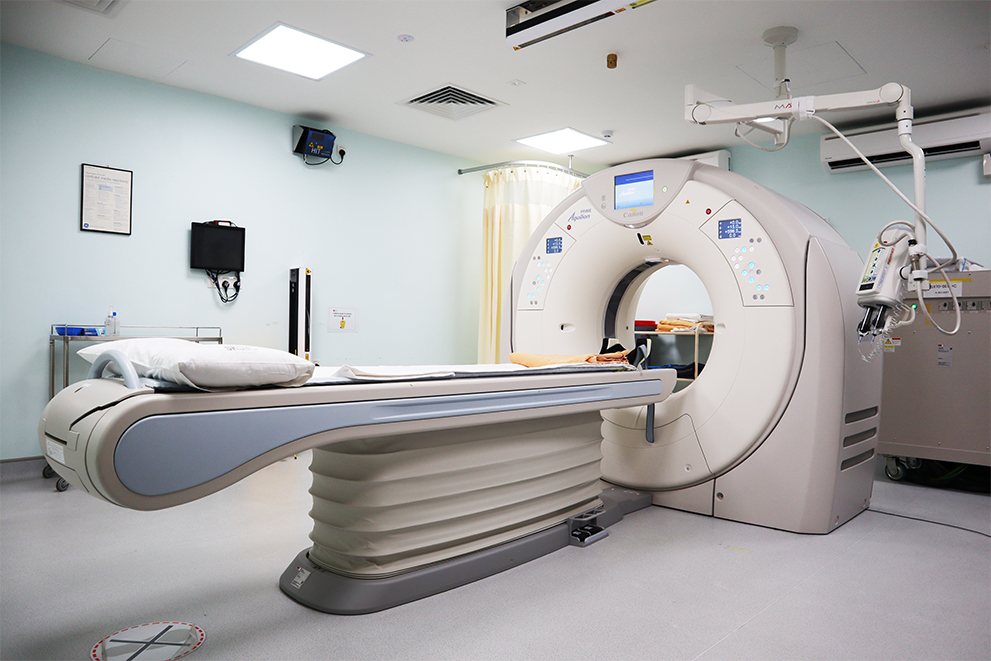
The widespread use of CT scans is attributed to various advantages:
Speed and Accuracy: CT scans are relatively quick, providing detailed images within minutes, enabling prompt diagnosis and treatment.
Non-invasive: Unlike some diagnostic procedures, CT scans are noninvasive, reducing the need for exploratory surgeries or more invasive diagnostic tests.
Versatility: CT scans can image various body parts and structures with high precision.
In the realm of modern medicine, Computed Tomography (CT) scans stand as an invaluable diagnostic tool, revolutionizing the way healthcare professionals diagnose and treat various medical conditions. Since its inception in the 1970s, CT scans have continually evolved, becoming an indispensable component of medical imaging technology. These scans provide detailed cross-sectional images of the body, offering insights into internal structures that were previously inaccessible without invasive procedures.
The versatility of CT scans renders them invaluable in diagnosing a wide array of medical conditions across various specialties. These include but are not limited to:
Trauma and Emergency Medicine: CT scans play a crucial role in assessing traumatic injuries, such as head trauma, spinal injuries, and internal bleeding. Their speed and accuracy aid in swift decision-making, potentially saving lives in critical situations.
Oncology: CT scans assist in detecting and staging cancers, monitoring tumor growth, and assessing treatment effectiveness. They provide detailed images that aid oncologists in planning surgeries, radiation therapy, and chemotherapy.
Cardiology: CT angiography allows detailed imaging of blood vessels, aiding in the diagnosis of heart conditions like coronary artery disease, aneurysms, and congenital heart defects.
Neurology: CT scans help in diagnosing conditions such as strokes, brain tumors, and degenerative disorders by providing detailed images of the brain and spinal cord
Computed Tomography utilizes X-rays to generate multiple images or slices of the body’s internal structures. The technology involves an X-ray tube that rotates around the patient, emitting thin beams of X-rays. Detectors opposite the X-ray tube capture the radiation after it passes through the body, and a computer reconstructs these signals into detailed, cross-sectional images. Advancements in CT technology have led to improved image quality, reduced radiation exposure, faster scanning times, and enhanced capabilities to visualize even the smallest structures. Dual-energy CT and spectral CT are among the latest innovations, offering improved tissue characterization and the ability to differentiate between different types of tissues more effectively.
The future of CT scans is promising, with ongoing research focused on
enhancing image quality further, reducing radiation exposure, and expanding the technology’s applications. Artificial intelligence and machine learning are being integrated into CT imaging to improve image analysis, automate processes, and assist in diagnosing abnormalities.
However, concerns regarding radiation exposure remain a consideration, especially for frequent scans or vulnerable populations. Efforts to minimize radiation exposure include dose-reduction techniques, such as iterative reconstruction algorithms and appropriate usage guidelines.

CT scans have undeniably revolutionized the field of medical imaging, providing clinicians with crucial insights into various medical conditions while guiding treatment strategies. The continued advancements in CT technology promise further improvements in accuracy, speed, and safety, ensuring better healthcare outcomes for patients worldwide. However, the responsible use of this powerful imaging tool remains essential, balancing its benefits with considerations for radiation exposure, ensuring optimal patient care.
Copyrights ©2024 Amaz Technologies